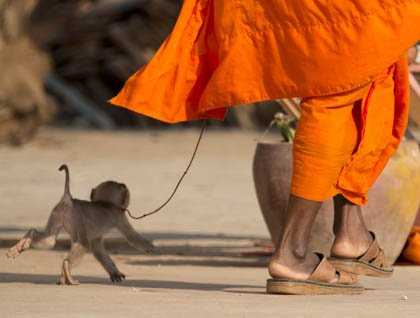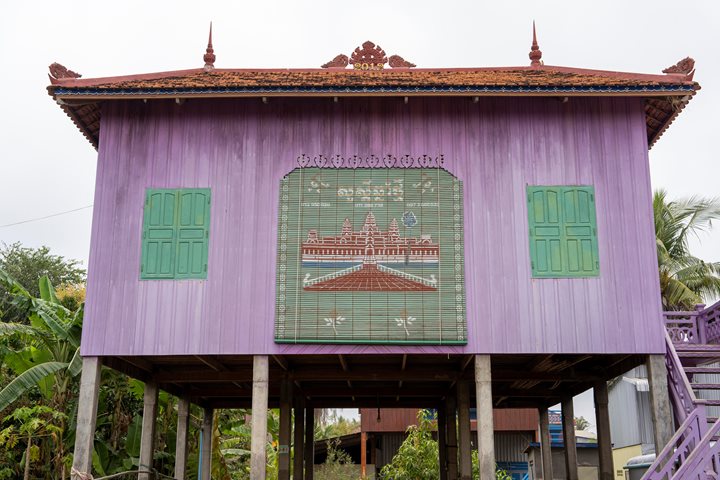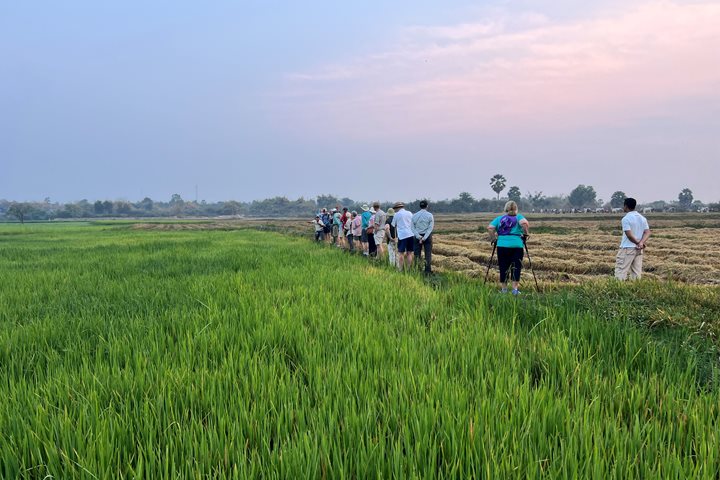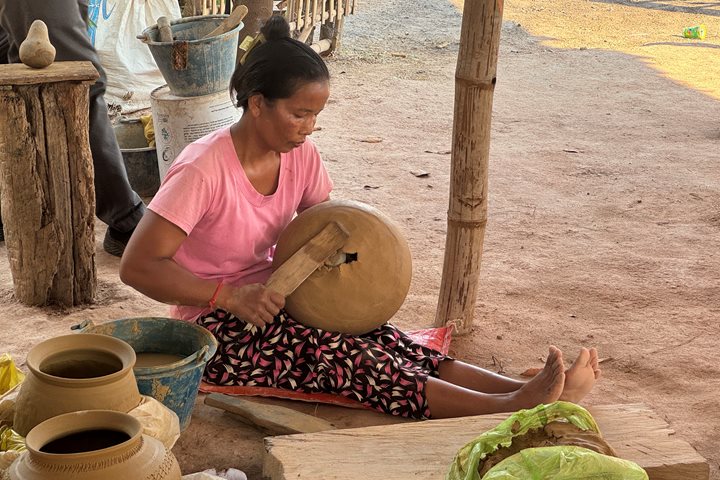We raise anchor as the sun rises and sail upstream on the Mekong to the village of Angkor Ban. This rural community is quite unique for its dozens of century-old wooden houses that survived three decades of civil war. While the Khmer Rouge destroyed most villages across the country, they requisitioned and lived in the houses of Angkor Ban or just used them as warehouses. In between these beautiful wooden buildings on stilts, surrounded by haystacks and cows resting in the shade, villagers are peacefully wandering, sorting their harvest of corn or peanuts. In many aspects, the architecture of the houses and the lifestyle of its inhabitants is unsurprisingly similar to the life of the people living in Angkor almost a thousand years ago. One of the elders of the village invites us to her residence, which we access barefoot via a concrete stairway.
From the heart of the rural settlement we walk to a small local market, and past a secondary school with very chatty young girls eager to practice their English, before returning to the ship via the Angkor Ban Pagoda. This colourful temple is dedicated to Theravada Buddhism, the main religion of contemporary Cambodia. A young monk is walking around with a juvenile pig-tailed macaque on a leash, to the delight of local schoolboys.
As we get back to the ship, two monks accompanied by the Elder of the village conduct a religious ceremony to bless our ship. The spiritual chanting is resonating throughout the lounge during this solemn moment, while our crew is sitting respectfully, praying with their hands joined in front of their face. After the ceremony, Max takes some time to give us tips on taking photos with our smartphones, followed by Stéphane's second presentation on the temples of Angkor, and how Airborne Laser Scanning recently transformed our understanding of Angkor.
During the presentation, we sail upstream from Angkor Ban to the Provincial Capital of Kampong Cham, a large town that finds its origin during the French colonial era. We moor about a mile downstream from the large bridge over the Mekong and hop on local coaches to cross this nice, clean and wealthy town. A few miles from the riverfront, we visit the Angkorian temple of Wat Nokor, dating back to the 12th Century. Surrounded by laterite walls, its main building is made of grey sandstone with intricate carvings characteristic of the reign of Jayavarman VII, the most famous King of Angkor. On our way back to the ship, we briefly stop on the riverfront to observe and test the solidity of a bridge entirely made of bamboo. And surprisingly it is sturdy enough to handle the weight of cars!
At sunset, we celebrate our successful journey on Jahan with a sunset farewell cocktail party on the deck and fine dinner. Tomorrow we will reach the town of Siem Reap, the provincial capital of the eponym province, which will be our base to visit Angkor, the jewel of the ancient Khmer civilization.







